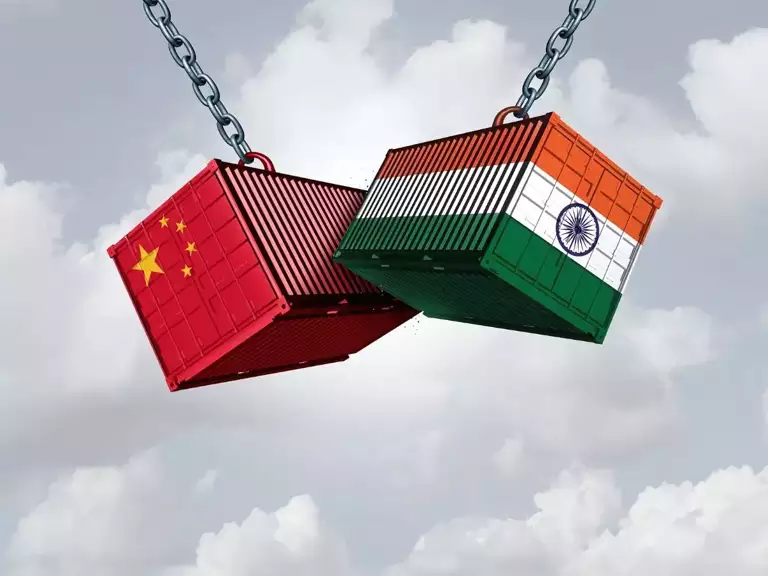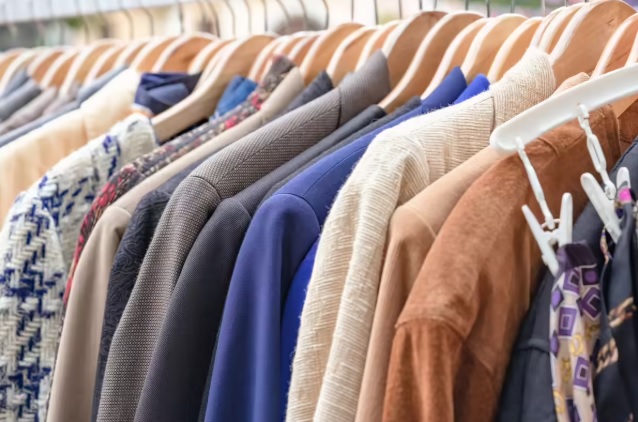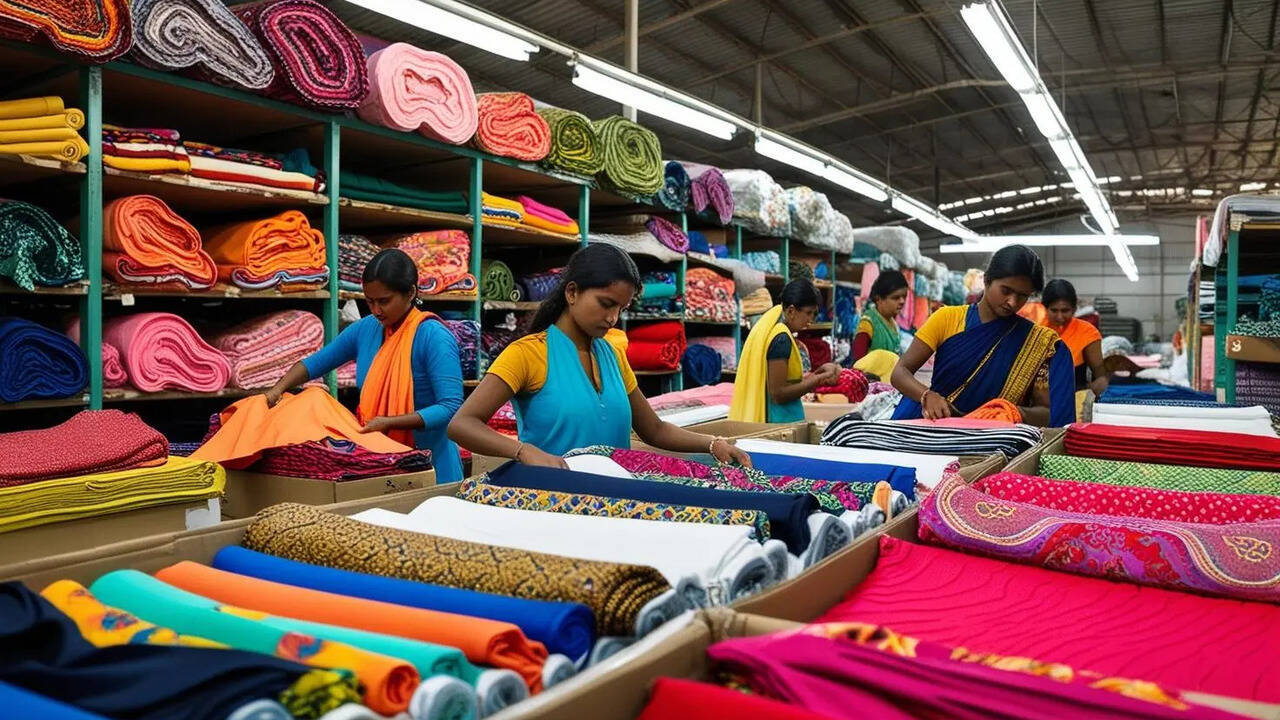FW
Coats, the world’s leading industrial thread manufacturer, has acquired Patrick Yarn Mill, a manufacturer of high-performance engineered yarns based in North Carolina, US. Patrick Yarn Mill specialises in cut-resistant and flame retardant yarns. It also produces yarns from recycled fibres marketed under its earthspun trademarks and with its large solar installation promotes its earth friendly yarns as ‘Spun by the Sun.
Founded in 1963, Patrick Yarn Mill’s unique spinning competencies in engineered performance yarns offer an opportunity to expand Coats’ existing Performance Materials portfolio as well as to extend its innovation capability. Coats will support Patrick Yarn Mill’s expansion into high-growth markets by leveraging Coats' unrivalled geographic footprint, breadth of global customer relationships and strong corporate brand.
Rajiv Sharma, Group Chief Executive, Coats, says Patrick Yarn Mill is an exciting acquisition that supports a key aspect of the growth strategy as it is a dynamic, customer focused company and its unique spinning systems combined with our existing technology portfolio will provide a strong market offering. Gilbert Patrick, President, Patrick Yarn Mill, says that Patrick Yarn Mill becoming part of the Coats family creates opportunities for both companies as there is a lot of synergy between our product offerings and technology.
This acquisition shows Coats’ intent to grow via M&A in Performance Materials and Services, two areas of strategic priority. Gotex, a Spanish company which designs and manufactures high-tech industrial yarns and tapes used in the telecommunications, energy and oil and gas sectors became part of Performance Materials. FRS, a UK based company which provides software solutions and expertise to improve operational efficiency and speed to market in apparel and footwear, became part of Coats Global Services.
Post two years of record growth in Canada, the Apparel Textile Sourcing (ATS) Brand is expanding to one of the fastest growing apparel and fashion markets in the World, Miami. The Apparel Textile Sourcing Canada was successful with 50 per cent increase in attendance and exhibition space in 2017, along with another hike of 25 per cent growth predicted for the August 20 to 22, 2018 show in Toronto.
ATS-Miami will showcase transparency, speed and responsiveness in Apparel & Textile Sourcing. The event will feature over 200 booths displaying apparel and fabrics as well as service providers, government representatives and national organisations all focused on a responsive supply chain, near sourcing and speed to market. Over 12 countries will participated in the premier edition of ATS-Miami.
With hundreds of manufacturers’ booths and exhibits, ATS-Miami will deliver three-days-worth of an unprecedented platform of global connections in manufacturing and fashion. With over 20 separate sessions from industry experts, international government representatives, fashion and trends experts. Some topics to be discussed are: International government roundtable discussion – Central America – CAFTA; Miami – The Gateway to the Americas – Miami’s Geographical Advantage etc.
The Apparel Textile Sourcing is not just about seminars, it’s also about a runway and models. The ATS Fashion Show will blend student, designer and producers showcasing fashions uniquely designed for Miami and Latin America.
Bangladesh's garment exports to the US dropped in the 10 months period uptill October this year due to higher shipments from countries including China, India and Vietnam. Bangladesh's apparel shipment to the US fell 4.22 per cent year-on-year to $4.54 billion, as per data from the US Department of Commerce. Indonesia, South Korea and China also had seen a drop in exports to the US. China, the global leader in apparel exports, exported garments worth $32.89 billion to the US, down 0.58 per cent year-on-year, as per the data. Indonesia's export fell 2.85 per cent to $4.09 billion and South Korea's 3.71 per cent to $733 million.
India shipped garments worth $6.36 billion to the US, up 3.44 per cent year-on-year. Vietnam's exports rose 7.07 per cent to $10.36 billion, Pakistan's 1.74 per cent to $2.31 billion and Mexico's 7.64 per cent to $3.99 billion. During the 10-month period, overall export to the US from Bangladesh also dropped by 4.09 per cent year-on-year to $4.87 billion. If one considers garment export growth to the US, Bangladesh now ranks at sixth position behind China, Vietnam, India, Pakistan and Mexico — where earlier the country's ranking was third/fourth in 2016.
However, imports from the US to Bangladesh have been rising in the recent months following capital machinery imports for the garment sector. Bangladesh imported goods worth $1.31 billion from January to October, which was $905.7 million in the entire 2016, as per available data. Siddiqur Rahman, President of the Bangladesh Garment Manufacturers and Exporters Association was apprehensive of the fact that, for the international market, India has brought down apparel prices to the level of Bangladesh by launching stimulus packages for the garment sector although the labour cost in India is higher compared to Bangladesh. Other factors include the fact that GAP and Walmart have recently shifted some work orders to India due to quicker lead-times, he said.
The United States and Brazil received 72 per cent of Peru’s total garment shipments between January and October 2017. Peru's total garment shipments to the US registered a 2.6 per cent growth. Peruvian garment shipments to the United States account for 67.8 per cent of exports. The US and Brazil are overcrowded and dynamic markets; therefore, they are important export destinations for Peruvian companies. The other top garment importers from Peru are Argentina, Canada, Ecuador, France, Chile, Colombia, the United Kingdom and Germany.
The most demanded goods are cotton T-shirts, knitted cotton shirts, undershirts, and synthetic shirts, among others. Production and commercialization of light sportswear —namely jerseys— will be reinforced in the coming months, thanks to the optimism generated by Peru’s recent qualification for the 2018 FIFA World Cup.
Peru’s garment imports barely totaled $550 million in the first 10 months of 2017, lower than the figures registered in exports. Peru’s major garment suppliers are China, Bangladesh, India, Vietnam, Turkey, Cambodia, Indonesia, Pakistan and Sri Lanka. Peru, the world's top alpaca fiber producer, supplies to international markets, mainly to Asia, the United States and Europe.
Peru currently holds 80 per cent of the world’s alpaca production. Alpaca-breeding associations, shearers, processing, industrial and artisanal dressmaking companies as well as spinners and fashion designers comprise this sector, which has reached its highest peaks over the past two years.
Zara is seeing margins under pressure. It is on course for its worst year since 2008. Q3 results due soon are likely to prove the point. Like-for-like sales are set to show a marked deceleration in the second part of the period, as the mild European weather has delayed purchases of fall/winter garments. The stock is hurt by short term concerns over the impact on profitability of a strong euro and a slowdown in like-for-like performance. Same-store sales growth decelerated to six per cent in the six months to July 31, from its strongest in at least 14 years in fiscal 2017.
Yet, Inditex, owner of Zara, has a business model that’s unmatched in the industry. Renowned for revolutionizing the supply chain model for fashion retail, the Spain-based company has gained a devoted following in the investment community. Inditex’s ability to get products quickly from the catwalk into stores, along with its smaller batch sizes, appeals to a modern consumer who thrives on instant gratification. Zara shoppers are happily prepared to pay a higher price for more newness, for fashion which is really on trend.
The emergence of online fashion retailers has put pressure on traditional, store-based rivals around the world.
Post nine months of intense preparation, the Karl Mayer Workshop (in) Vietnam has been officially launched with a grand opening ceremony last month. Representatives from Illies, Kuna Robert and Wu Chun Yan, the trainers who provided training courses for the Karl Mayer Vietnam Workshop, and Eddy Ho, Sales Manager of Karl Mayer, Hong Kong welcomed participants.
The visitors – customers from Hanoi and Ho-Chi-Minh-City – attended the premiere event held November 13 to 17, 2017, followed by a second workshop held from November 20-24, 2017. Both workshops were conducted in Ho-Chi-Minh-City. Karl Mayer’s key focus was to expand the Southeast Asian market so that more Vietnamese manufacturers would get technical information and would be convinced to purchase Karl Mayer warp knitting machines.
To meet current market demand, Karl Mayer will provide more product-related learning courses to help customers get familiar with the theory and practical hands on operation of Karl Mayer’s machine. Trainees from this workshop in Vietnam who attended the one week WKB training course got extensive knowledge, including that of ‘machines theory’; ‘study of warp knitted fabric constructions’; ‘textile calculations’ and hands-on practical training experience working on machines. Karl Mayer Workshop Vietnam offered additional courses on ‘introduction to machine maintenance’ and ‘article change’.
Other areas of knowledge included: Introduction “Stitch formation“ Warp Knitting’; Tricot machine structure and technical features; Function and explanation of the knitting element movements and their synchronisation with help of chain links; Explanation of the KAMCOS in details; and each participant got hands on practice experience working on the machine.
Spearheaded by the New Delhi-based Denim Manufacturers Association (DMA), Indian denim manufacturers have requested the government to offer increased support to counter the increased costs and potential loss of business. DMA chairman, Sharad Jaipuria says since the introduction of GST which only added to the price of goods sold before the October 1 and slashing of drawback duties for exporters, the denim industry has temporarily closed down about 30 to 40 per cent of production and is operating at 60 to 70 per cent capacity following a slowdown in demand and over-capacity in the industry. Presently, the industry is bleeding and if the situation continues, there can be more production cuts.
The government’s move to reduce duty drawback rates created resentment among exporters that had relied on the funding to maintain prices and ensure competitiveness with its neighbours. The Apparel Export Promotion Council has said the steep drop in drawback support will negatively impact about 7,000 small and medium enterprises in the apparel export sector creating an adverse impact on the employment being provided to over 12 million people.
The new rate for cotton garments was dropped from 7.7 per cent to 2 per cent while the duty drawback rate on garments containing cotton and man-made fibre blends is now 2.5 7 per cent, as against the previous 9.5 7 per cent and the rate on garments made of man-made fibres is also 2.5 7 per cent, as against 9.8 7 per cent, before.
Jaipuria opined with the all-inclusive GST, the government has withdrawn refund because they had already given exporters a provision that the GST could be claimed back so the government is saying that if we are allowing you to claim back the GST under Make in India, then why should we give you the additional refund under the drawback program begun last year.
Despite this, there still is a gap between the rescinded drawback and the rollback of the GST of about 5 per cent, which is what is causing heartburn among manufacturers and could lead to a comparable increase in FOB prices. The apparel industry in India has continued to urge the government for relief and has been able to obtain some help from the GST Council.
Bangladesh’s apparel manufacturers feel infrastructural limitations are the major obstacles that stand in the way of more aggressive progress. They say Bangladesh’s export target of $50 billion by 2021 is possible only if infrastructural limitations are out of the way.
Garments account for over 80 per cent of the country’s net exports and are the country’s biggest export sector. The issues of gas and electricity, are major hindrances, and have been a constant complaint from Bangladeshi apparel makers, especially with a fear about a rise in the bulk tariff of electricity following the recent hike in retail power tariff. Apparel exporters are pushing for a clearer plan and strategy on energy sources.
In November 2017, Bangladesh’s apparel exports stood at $2.52 billion, up from $2.29 billion dollars in October. On the basis of the strategic apparel export target for the July-November period, net earnings (knitwear and woven garments combined) were 2.87 per cent higher than what was expected. But apparel exporters say this increase is very low and that an increase of ten per cent is possible but concentrated efforts must be focused on eliminating such hurdles. India’s garment sector is fast becoming a formidable opponent for Bangladesh on the global stage.
The retail climate has impacted growth across many of Cherokee’s brands. For the current fiscal, gross profit is now expected to be in the range of $36 to $38 million dollars, down from $39 to $41 million previously. Adjusted ebitda is expected to be in the range of $7 to $9 million versus a range of range of $10 to $12 million previously.
Cherokee’s updated guidance accounts for its year-to-date performance, specifically the retail headwinds encountered as it transitioned its namesake Cherokee brand from the Target chain to new licensing partners. Tony Hawk licensing revenue in Canada, while growing with the year-over-year increase of 20 per cent, is still behind original projections. The bankruptcy of Sears Canada combined with the overall retail environment also impacted its revenue forecast.
Hi-Tec’s transition from its legacy operating model to its new licensing model is also being affected by the challenging retail climate. Finally, the transition of the Flip Flop Shops business model is driving slower franchise shop openings as well as leading to the closing of underperforming franchise locations. In the US and Canada, Hi-Tec is in the midst of expanding the product offering with the launch of men’s and women’s apparel and accessories slated for late summer, early fall 2018.
Seams, the Association and Voice for the US Sewn Products Industry, held its annual Fall Networking Conference recently as it continued its 50th anniversary celebrations. With more than 200 member companies, SEAMS today consists of America’s foremost fashion brands, retailers, manufacturers and textile providers.
During the event, Will Duncan of Will Duncan and Associates (WDA), whose group has assumed daily management and operations of the not-for-profit organization, laid out his made-in-America vision and growth agenda for the association. He, along with SEAMSs new marketing associate, Jerry Inman of Demand Worldwide, NYC, offered a peek at and value proposition of SEAMSs newly revamped website and visual brand identity which was subsequently launched and announced to the trades.
The event held meaningful presentations by industry leaders and there were networking opportunities under the theme “Empowering the made in America movement. Seams transformed itself from a small, regional apparel manufacturing group into the widely recognised National Association for the Sewn Products Industry. It also manages more than thirty industry networking events and conferences.
“We want to the ‘voice’ in the Made in America category,” said a spokesperson while giving an overview of the changes. “And we have an opportunity because nobody really owns that term, ‘the voice.’ We’re going to own it…further, the changes, made to help SEAMS be at the forefront of the reshoring movement. .. we’re the most well-informed, go-to resource shaping the growth and resurgence of made in America, providing the access, the people, processes and products to move production back to the U.S.”












